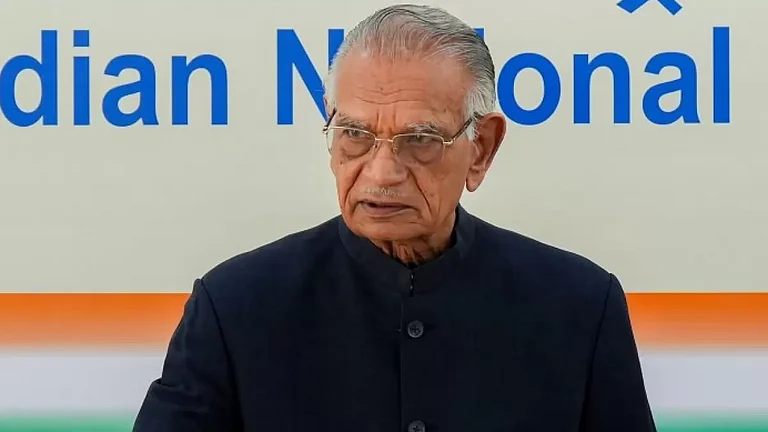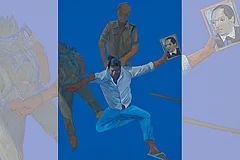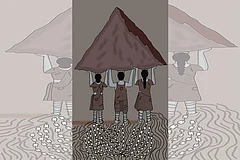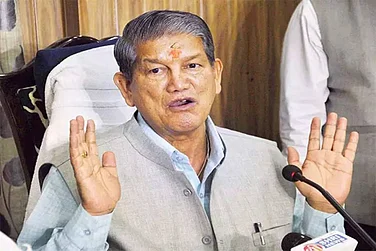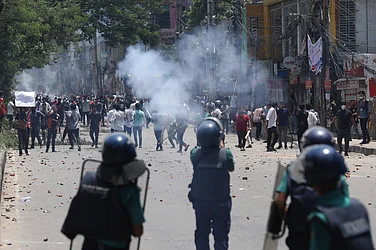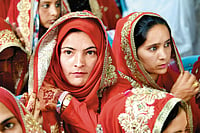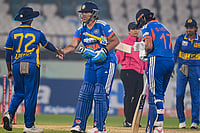Our imagination of the freedom movement, and for that matter, a freedom fighter, is shaped by a set of moral-political ideas and ideals. These ideas construct a neat, straightforward, and undifferentiated story of a national movement as a morally superior stage of our past.
A freedom fighter, in this schema, is defined as an extraordinary individual who gave everything to fight against colonial domination. This given story of anti-colonial nationalism has been questioned by serious scholars of Indian history. The Subaltern Studies, which began as a collaborative project to explore histories of subaltern classes—Dalit, women, Adivasis, and so on—played a significant role in transforming our understanding of India’s colonial past. Yet, our public discussions about nation, nationalism, and nationalists are still not mature enough to accommodate subaltern subjects as freedom fighters.
The rise of Hindutva-driven nationalism as the dominant narrative of politics in the last few years has made nationalism a serious point of reference. Efforts have also been made to trace the histories of those heroes of the national movement who have not been given due recognition by non-BJP governments. This self-claimed revisionist historical quest, however, is driven by two contradictory impulses. First, it wants to replace the established official history of the national movement by identifying a new set of nationalist leaders as heroes. The transformation of V D Savarkar as a new official national icon is very relevant in this regard. Secondly, and quite paradoxically, the Hindutva project of revisionist history shares the assumptions, framework and modes of representation established by the postcolonial Indian state for the official portrayal of the national movement over the years. They simply want to write a new official history of the national movement, which does not necessarily have to accommodate the no-so-heroic historical subjects and their everyday struggles.
Writing a truly subaltern history of the most marginalised groups is not an easy task. Political theorist Sudipta Kaviraj, who was part of the subaltern studies collective, underlines the fact that theorising subaltern consciousness and its representation in a form of history is an intellectually complex business. He argues, ‘an aspiration to build a picture of society—both in the sense of…analysis and of the construction of political ideals—from the point of view of subaltern groups …[is] a hard task under any circumstance, but particularly difficult for intellectuals drawn from the middle classes.’ This crucial reminder becomes more relevant when we try to construct a popular history in the public domain from the vantage point of subaltern groups. Literature, especially the short stories and novels, is a good resource to think about the forms and substance of subaltern nationalism.
I am particularly interested in an Urdu short story, 1919 ki Ek Baat, written by Sadaat Hasan Manto. The story is about an event that took place in 1919. There are two passengers in a moving train. The first passenger narrates a story to his fellow-traveller. In other words, there is a speaker and a listener inside a story itself. 1919 ki ek Baat is about a pimp, Thaila Kanjar. His sisters are prostitutes, and he works for the same brothel. In the politically volatile context of 1919 Punjab, Thaila got involved in a protest and led a group of youngsters to attack the British soldiers. He is shot dead by the police. The story does not have a conclusion; rather it remains open-ended. Manto poses a question for all of us: can we think of the sacrifice of Thaila Kanjar as a form of subaltern nationalism?
II
From our point of view, there are two important moments in this story. The description of 1919’s Amritsar—political agitations, the role of political leaders and the impact of mass mobilisation—is the first relevant moment in this regard. The speaker tells the listener that in 1919, all of Amritsar turned into a hub of political activism. As a result, the provincial government became quite authoritarian: Gandhi’s entry was banned, religious gatherings were prohibited and the people were forced to keep away from the all those activities that were considered to be anti-British. In such a scenario, one peaceful public gathering is forcibly dispersed. In retaliation, the crowd also becomes aggressive, and it leads to a violent conflict between the British and the Indians.
This long introductory account not only merely serves as a backgrounder to the main story but also tells us about the manner in which political acts are commemorated as memories. Like all acts of commemoration, the speaker also reconstructs the past from the viewpoint of own his present. However, Manto does not give us a clue to his present; rather the immediate context of a moving train underlines a highly unsettling present to revisit an equally unsettling past.
The rise of Hindutva-driven nationalism as the dominant narrative of politics in the last few years has made nationalism a serious point of reference.
At this point we are also introduced to our main character: Thaila Kanjar: Although the real name of this person is Muhammad Tufail, the title ‘Thaila Kanjar’ is given to him by others. Thaila is the brother of two celebrated prostitutes of the city—Shamshad and Almas. He is known as a baddie: he gets into ‘wine and gambling’ very early in his life. Even his prostitute sisters are annoyed and disown him as a brother. But Thaila knows how to get things done and often manages to get money from his sisters for his needs. Despite these habitual weaknesses, Thaila is a good-looking young man—he is decent and sophisticated and has a good sense of humour.
In the violent encounter with the British soldiers, Thaila leads a group of youngsters to fight back. Although his momentary radicalism encourages others to give a fighting reply to the British, he is killed in this highly one-sided battle. The assassination of Thaila turns out to be a symbol of protests. The speaker himself is very impressed with this brave act of Thaila, though he is disappointed with the fact that Thaila’s name is not going to be included in the list of future revolutionaries.
This part of the story could also be read as a standard nationalist saga of unknown sacrifices. However, exactly at this point, the second crucial moment begins. The speaker tells the listener that in this atmosphere of mourning, Thaila’s sisters are called to perform a mujra to entertain the British officers. The speaker tells the listener that this invitation is sent intentionally to humiliate them as well as the people of the city. The sisters go to the British cantonment and perform the mujra. This was a very aggressive performance—the sisters remove their clothes and ask the British to kill them:
“Lo hame dekh lo hum thele ki behne hain … us shahid ki behne jiske khoobsoorut jism ko tumne sirf isliye apni goliyon se challin challin kiya tha ki us jism main apne vatan se muhabbat karne vaali ruh basi hui thi … hum usi thele ki khoobsoorat behne hain… aao aur apni shehvat ke garam garam lohe se humaara khushbuon main basa hua jism daagdaar karo… magar aisa karne se pehle sirf humain ek baar apne muh par thook lene do’
[“Look at us ... We are Thaila’s sisters ... Sisters of the martyr whose body you riddled with your bullets only because he loved with all his soul ... We are his beautiful sisters ... Come, pierce our perfumed bodies with the hot irons of your lust ... But before you do, let us spit on your faces once”]
The speaker becomes more sombre and informs the listener that finally Thaila’s sisters are also killed. The listener is not fully comfortable with this conclusion. He provokes the speaker for the first time and asks him to tell the truth. The speaker becomes serious. He tells the listener, with his gestures, silences, and broken sentences, that the listener is right: Thaila’s sisters did not show any resistance to the British! For the speaker, this is an act of extreme betrayal!
Manto gives us an absorbing description:
“Train station main daakhil ho chuki thi- jab train ruk gayi to usne ek coolie ko bulakar apna asbaab uthvaya. Jab vo jaane laga to mainne use kaha: aapne jo daastan sunayi hai uska anjaam mujhe aapka khudsaaqta maloom hota hai… mere humsafar ne apne halak ki talkhi thook ke saath nigalte hue kha: ji haan un haram… vo gaali dete dete ruk gaya .. unhonne apne shahid bhai ke nam par batta laga diya”
[Then the train had pulled into the station. When it stopped, he called a coolie and asked him to carry his luggage. As he was about to leave, I said: ‘I suspect you invented the end of the story.’… Startled, he looked at me: ‘How did you guess?’ I said: ‘Your voice was firm, but full of anguish ...’ My fellow-traveller swallowed hard and said: ‘Yes ... Those damn…stopped himself from cursing them: ‘They blackened the name of their martyred brother ...’ Then he stepped down onto the platform.]
In my view, we can draw two inferences from this story. First, subaltern nationalism is very much rooted in the disorderliness of everyday life. We should not try to delink the extraordinariness of subaltern figures from the messiness of his/her social context. In this story, the everyday life of Thaila’s sisters did not change. They did not follow the nationalist expectation; instead, they tried to get themselves adjusted in a new reality—a reality in which emotions such as humiliation and embarrassment had already been normalised.
Secondly, we should not evoke the given nationalist morality as a yardstick to evaluate the specific acts of Thaila’s sisters. The narrator of the story tried his best to offer a morally persuasive account of that event. However, his listener, the other passenger, realises the weak conclusion and asks a counter question. The agitating tone of the speaker in the final moment of this story underlines his uneasiness. He wanted to construct an ideal heroic subaltern story; but the messiness of the past made his task impossible. This distinction between the nation’s past and nationalist history has always been the most important challenge for the historians of our national movement.
(Views expressed are personal)
MORE FROM THIS ISSUE
Hilal Ahmed is an author and associate professor at CSDS. He works on Indian democracy, political Islam and politics of symbols
(This appeared in the print as 'Unsung Heroes')








